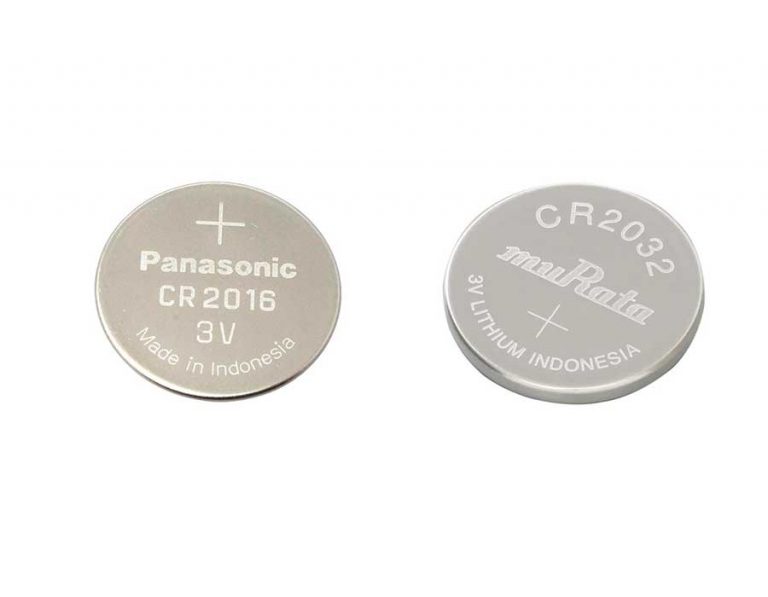What Is the Voltage of AA & AAA Battery?
The battery names AA and AAA are used to designate specific batteries’ size and charge capacity. The biggest distinction between the two is their size. AAA batteries are smaller than AA batteries. It is significant since many battery-operated gadgets only require one size. A dry cell battery’s normal size is AA or AAA, commonly used in low-drain electronic devices and gadgets. However, what is the difference between an AA and a AAA battery in terms of voltage?
The nominal voltage of AA and AAA batteries is 1.5V. During the life of a cell, the energy of these batteries will normally decline. The most common batteries in the home are AAA and AA. Small electronic devices such as flashlights, radios, and calculators are powered by it.
About AA batteries
AA batteries, sometimes known as “double-A,” are the most common battery size. These batteries may be found practically anywhere and are used in various applications. AA batteries are generally dry cells with an electrolyte contained within a paste. AA batteries have a height of 1.988 inches and a diameter of 0571 inches. They are normally alkaline and have steel casings, producing 1.5 volts. These batteries are widely used in anything from thermometers to flashlights to cordless phones. AA batteries are ideal for devices that demand a moderate current but are not used frequently. They can also be used for always-on devices but require very little energy, like clocks. AA batteries also come in different chemical makeup, with lithium non-rechargeable batteries with 3 volts and the rechargeable lithium-ion batteries, which have a voltage of 3.6V. Furthermore, there are Nickel-metal hydrides and nickel-cadmium AAs, both 3.6 and 1.2 volts, likewise rechargeable.

About AAA batteries
AAA batteries, sometimes known as “triple-A” batteries, are the second most common type of battery. Small electronic devices like a TV remote controls, kitchen timers, graphing calculators, and bathroom scales frequently use triple-A batteries. AAA batteries have the same 1.5V voltage as AA batteries; however, they produce less energy due to their smaller size. Small gadgets that don’t require a lot of energy, such as kitchen timers, use these batteries. The batteries will last a long time and still perform their function. AAA batteries are only 10.5 mm long and are utilized as a single cell. Standard, alkaline, lithium, and rechargeable AAA batteries are the four major kinds. Alkaline rechargeable batteries, nickel-metal-hydride rechargeable batteries, nickel-cadmium rechargeable batteries, and others are all rechargeable batteries.
Types of AA and AAA batteries available and their voltages
Zinc carbon AA and AAA battery
Zinc carbon batteries have a nominal voltage of 1.5V and a nominal charge of 500-600 mAh for AAA and 600-1600 mAh for AA batteries. They are non-rechargeable. The capacity of a battery is determined by its age, temperature, discharge current, and other factors. Zinc carbon batteries are inexpensive and dependable, but they have a short storage life (they eventually leak), cannot produce higher currents without capacity loss, and have other drawbacks. Most Zinc-Carbon AA and AAA batteries are used in low-cost toys and other applications.
Alkaline AA and AAA battery
Alkaline batteries have a nominal voltage of 1.5V and a nominal capacity of 850-1200 mAh for AAA and 1800-2700 mAh for AA batteries. They are non-rechargeable. The most common non-rechargeable AA and AAA batteries and some of the most typical batteries on the market are alkaline AA and AAA batteries.
Li-ion AA and AAA battery
Li-Ion AA and AAA batteries are energy storage devices with voltages ranging from 3.2 to 3.7 volts and 350-600 mAh for AAA and 600-2000+ mAh for AA batteries, based on numerous lithium-ion compositions. Li-Ion AA and AAA batteries are not fully compatible with 1.5V AA and AAA batteries due to their 3.2-3.7 volts. However, some gadgets accept the use of both 1.5V non-rechargeable Zinc-Carbon, alkaline, and other 1.5V batteries, 3V non-rechargeable lithium batteries, and 3.2-3.7V rechargeable lithium-ion AA and AAA batteries offer several advantages over non-rechargeable AA and AAA batteries. LED torches, cameras, and other similar gadgets are examples of such devices.
Lithium 1.5V AA and AAA battery
Some manufacturers sell lithium-ion batteries with control electronics that reduce the battery’s primary 3.2-3.7V down to 1.5V to allow the rechargeable lithium-ion batteries to function with 1.5V AA and AAA battery devices. AAA batteries have a nominal capacity of 400-600 mAh, while AA lithium 1.5V batteries have a capacity of 1000-2000+ mAh. Such batteries have either a USB charging port or a micro-USB charging connector.
Nickel Cadmium AA and AAA battery
Cadmium Nickel AA and AAA batteries are among the oldest rechargeable AA and AAA batteries available. The nominal voltage of NiCd batteries is 1.2 volts, with a nominal capacity of 300-500 mAh for AAA and 600-1000 mAh for AA batteries. Although NiCd batteries are inexpensive, dependable, and capable of high currents, they contain hazardous metals and only tolerate a limited number of charging/discharging cycles. These are why NiCd batteries are being phased out in favor of Nickel Metal-Hydride (NiMH) batteries with low self-discharge.
NiMH AA and AAA battery
NiMH AAA and AA batteries, which have a nominal voltage of 1.2V and a nominal capacity of 600-1300 mAh for AAA and 700-2800 mAh for AA batteries, are very popular. Modern NiMH batteries can deliver reasonably high currents, have a low discharge rate, and are environmentally beneficial because they do not include heavy metals or other harmful components. However, They must be properly recycled after they expire. Some NiMH battery types can handle up to 2000 or more charging/discharging cycles when charged with suitable battery chargers and not drained with unusually strong currents.
Nickel Zinc AA and AAA battery
Rechargeable AAA and AA batteries made of nickel-zinc (NiZn) have a nominal voltage of 1.6V and a capacity of 500-700 mAh for AAA and 1500-1800 mAh for AA batteries. NiZn batteries have good discharge properties and a low self-discharge rate. Although NiZn batteries are generally fully compatible with 1.5V batteries, be aware that if four NiMH batteries (4.8V) are replaced with four NiZn batteries, some devices designed for NiMH batteries (1.2V) may be harmed (6V).

What Voltages Are Harmful to AA & AAA Batteries?
The voltage for AA and Triple-A batteries should be between 1.1 and 1.5 volts. It indicates that the battery is fully charged. However, if the voltage falls below 1.1V, the battery is already dead. You can use a voltmeter to see how much power your alkaline batteries have.
What Are the Differences Between AA And AAA Batteries?
Alkaline cells refer to both AA and AAA batteries. Both are used to power electronic equipment and gadgets. But, aside from that, what differentiates them?
- AAA batteries are significantly smaller than AA batteries. The Energy Storing Capacity is proportional to the battery’s size. Even though they both produce 1.5 volts, the quantity of energy consumed varies. AA batteries have a somewhat longer life span than AAA batteries.
- AA batteries are far more popular than AAA batteries in terms of sales. AA batteries are in higher demand than AAA batteries.
How To Check AA And AAA Battery Voltage?
The following are the ways you can use to test the voltage of your AA and AAA batteries:
- Switch your voltmeter to the DC mode. The DC mode is indicated by the term VDC on the middle dial. It’s sometimes a single line with three dashed lines beneath it.
- While the voltmeter is in the DC mode, set it to a voltage close to 1.5 volts.
- Connect the red lead of the voltmeter to the battery’s positive terminal. The + terminal is the high protrusion on an AA or Triple-A battery. The voltmeter’s black lead connects to the battery’s negative terminal; this is the cell’s flat end.
- Read the voltmeter display while holding both ends of the lead. A fully charged battery will display a reading of 1.1V to 1.5V. If the meter reading drops below 1.1V, the battery is either low on charge or dead.
Conclusion
While the physical differences between AAA and AA batteries prevent direct replacement, each of these battery sizes is available in various compositions, each with its voltage, capacity, shelf life, pricing, and discharge capacity. Most AAA and AA battery-powered devices require 1.5V AAA and AA cells to function effectively; however, some may benefit from upgrading to lithium 3.0-3.7V batteries if the device supports them. If you’re unsure about the battery, your device supports, consult the device’s Owner’s Manual for further information.






